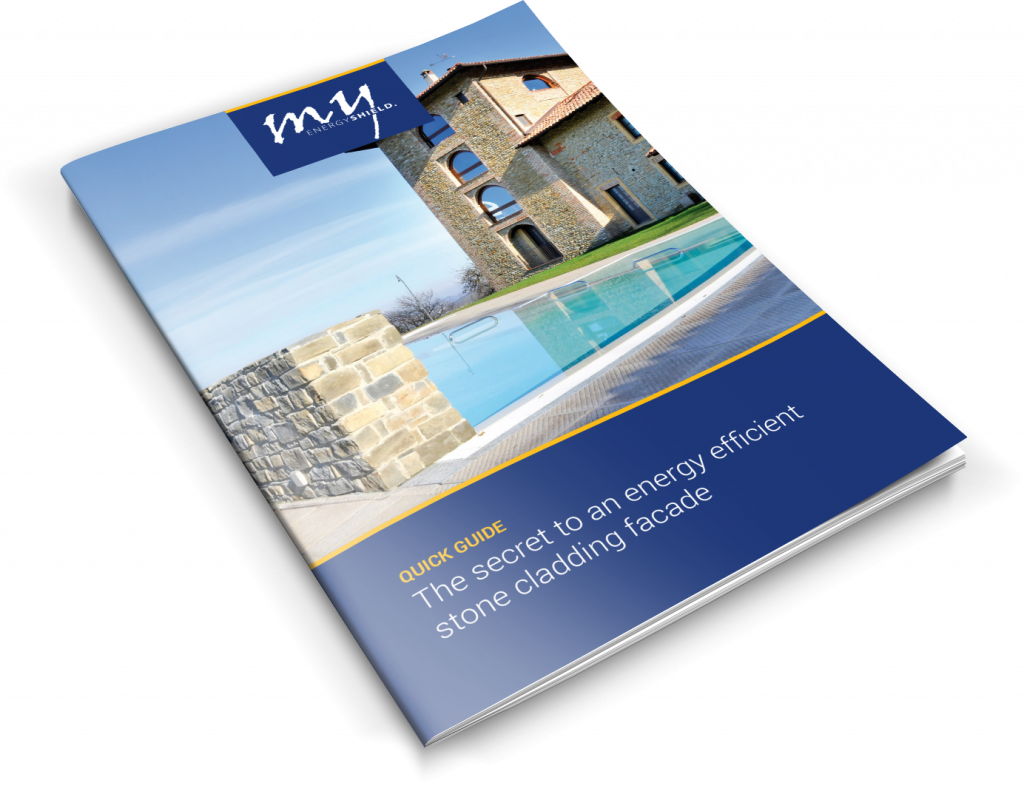We expect more and more from our homes. Regardless of our preferred style – be it traditional or provokingly modern, imposing a mark on its surroundings– our homes must be ever more efficient and ever more pleasing to the eye. Clearly, the façade plays an important role in the realization of our wishes – the façade, enveloping and finalizing the architect’s ideas creates our first impression of a building. Once, the façade was connected only with aesthetics, but today, its function has broadened far beyond its enhancing gift paper function. And we better be aware of this when we plan to renew our building’s facade.
In the functioning of the building as a whole, the facade plays a major role. It has to resist rain, snow, moisture and mold, and, pursuing a growing trend of increasingly rational energy consumption, it must also provide the building’s thermal protection.
Today, much is heard about a building’s energy performance. We aim to contribute to this initiative and help reduce fuel consumption and environmental pollution. In the end, households are the greatest environmental threat. As the automotive industry, embracing the initiative for a better tomorrow, has already directed its course towards using renewable resources, so major changes are taking place in architecture and building, where the façade is the most problematic challenge.
Crumbling plaster is the first and most obvious sign of an aging facade.
No doubt about it. The façade is the largest connecting link between a building’s interior space and its surroundings, and therefore has a great impact on our indoor living comfort. Through non-insulated or poorly insulated building envelopes, a lot of heating or cooling energy can quickly go to waste.Example: Through the façade, the major part of a building’s heat envelope, a two-story building of approximately 1200 square meters up to 50% of energy may be wasted. This is strongly reflected in the cost of cooling or heating.
So, a new color is your least important problem when you decide to renovate your facade. If only surface renovation is attempted, it will not solve the malfunctioning of a worn- out facade system, and it will definitely not provide for your building’s future. Although a façade’s changing color or crumbling are the most obvious signs of aging, the real reason why a renovation is needed lies not in the color, but in what is below the outer layer. If you are already renovating your facade, do take it as a whole, as only a thorough renovation will protect your home from external discomforts and let you experience long-term living comfort.
Investment for the future
A well-planned façade system can last as long as the lifetime of a building. This means that you will enjoy indoor living comfort as long as you live. By renovating the facade, you will also increase the building’s market value, as today’s energy-efficient buildings are priced higher.
Protection against health damaging moisture and mold
Well-designed and high-quality façade systems prevent the formation of thermal bridges, the most frequent reason for the occurrence of moisture and harmful molds in interior spaces. As thermal insulation reduces the exchange of temperature, pleasant interior living conditions may be achieved throughout the year.
Saving heating and cooling costs
Most energy is lost through exterior walls. This means that a large part of the heat with which you want to warm your rooms will be wasted. With proper façade thermal insulation, you can reduce energy consumption and let the heat accumulate inside without major losses.
However, savings are not only generated in heating, but also in the summer cooling of buildings. Thermal insulation prevents heat transmission through the building’s interior walls and reduces unnecessary overheating of the interior space. Hence, indoor living in summer becomes much easier to bear.
Experts advise:
Facade jobs are best planned in winter and executed in spring
The façade’s durability and its thermal insulating functions depend not only on materials. Implementation quality is also an important factor, and it is largely influenced by the period in which the work is done. Facade jobs are best planned in winter and executed in spring or late summer – making use of minor temperature fluctuations, not too hot days or not too cold nights, as temperature should not fall below 5 ° C during the night. In order to start any façade job in spring, we recommend that you use the winter time for planning and selecting the appropriate materials.

 +386 7 39 39 510
+386 7 39 39 510 advice@energyshield.biz
advice@energyshield.biz

